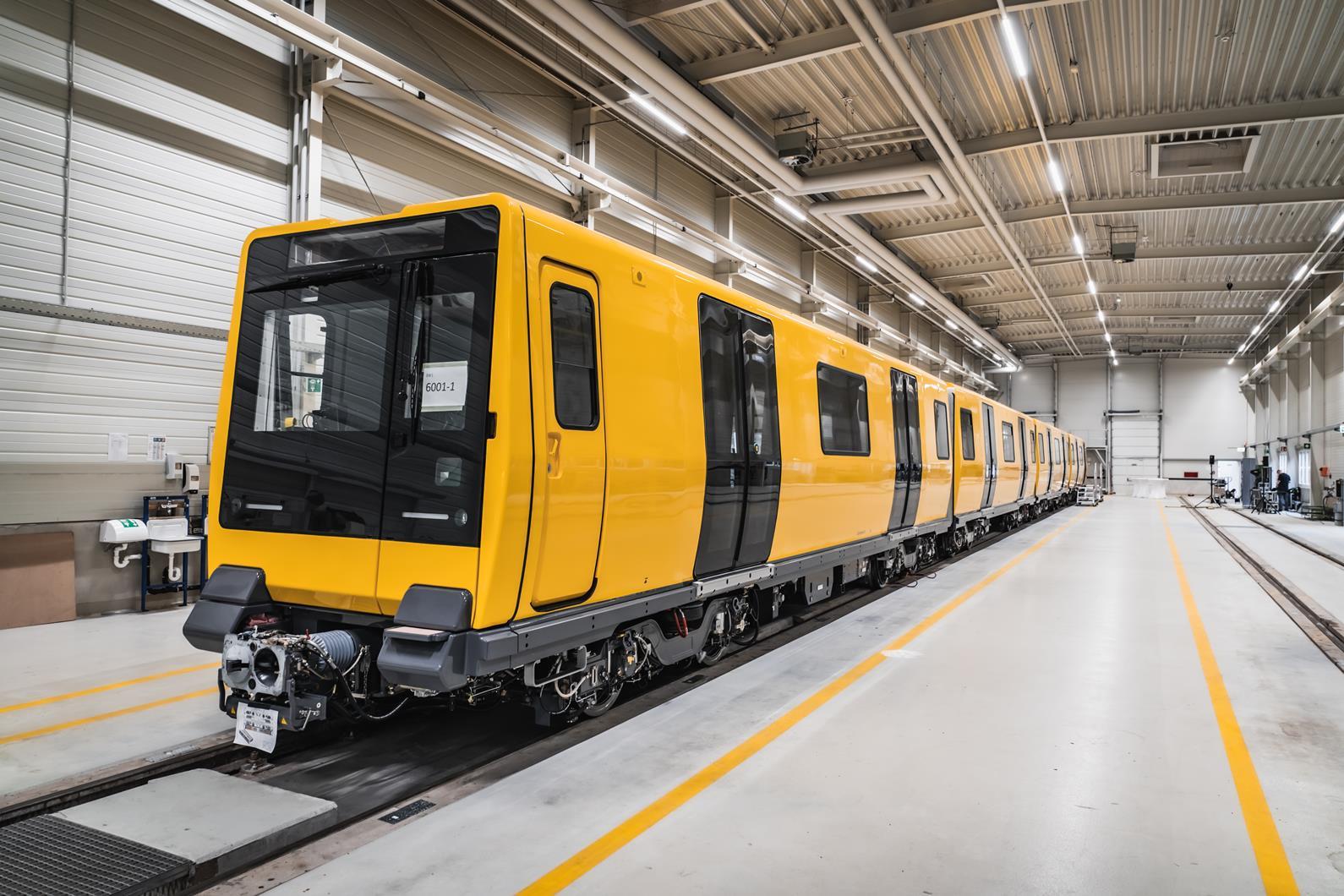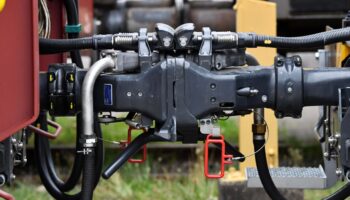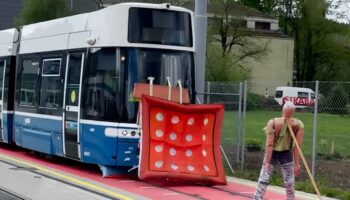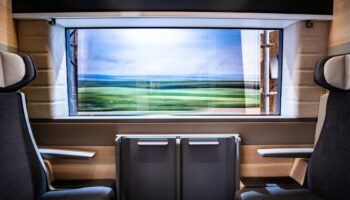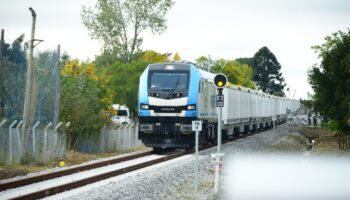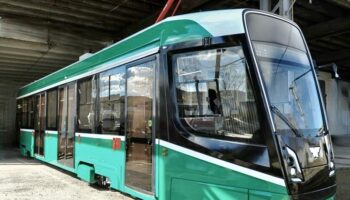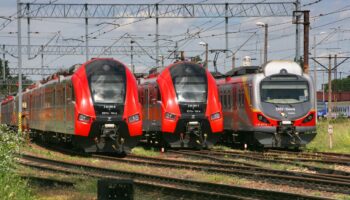Germany: The presentation of the JK-series four-car train for the U-Bahn urban metro system of Berlin was held at the Stadler service center in Velten. In total, 4 four-car pre-series vehicles are to be produced by the end of this year: two small-sized JK-series and two wider J-series. Next year, their total number should be increased to 24 units.
It was originally planned that pre-series trains would be delivered to the Berlin metro this year. However, as Stadler’s press service explained, the delivery was postponed until the spring of 2023 due to supply chains challenges. At the same time, this will not affect the initial delivery schedule of serial cars, which should begin arriving in Berlin from the end of 2023, 4 cars per week.
The assembly of rolling stock is carried out as part of a large order for the BVG urban transport operator of Berlin obtained by Stadler in 2020. It provides for the supply of up to 1,500 metro cars worth €3 bln. The firm part of the order involves the delivery of 376 trains until 2025. It includes 17 four-car and 36 two-car JK series trains for Lines 1-4, as well as 33 four-car and 52 two-car J series trains for Lines 5-9.
The production of trains is carried out at the Stadler plant in Berlin’s Pankow district. The producer decided to invest €70 mln in the expansion of the site in order to fulfill this contract. The project includes not only the construction of a new production workshop, but also the creation of a logistics center and additional office space.
The bodies of both train series will be made of aluminum, each car will be equipped with three doors on each side. The minimum radius of the passable curves will be 50 m, the maximum speed will be 70 km/h. The other parameters are different.
Thus, the JK-series trains with a width of 2.4 m and a height of 3.1 in a two-car version will be able to accommodate 140 people, including 22 seats, in a four-car – 309 people, including 82 seats. In turn, the passenger capacity of the J-series train with a width of 2.6 m and a height of 3.4 m in the two-car version will be 215 people, including 38 seats, in the four-car – 463 people, including 110 seats. The total power of six traction motors of a JK-series two-car train in the continuous mode will be 540 kW, for a four-car vehicle it will be 1080 kW. For the J series, these parameters are 660 kW and 1320 kW, respectively.
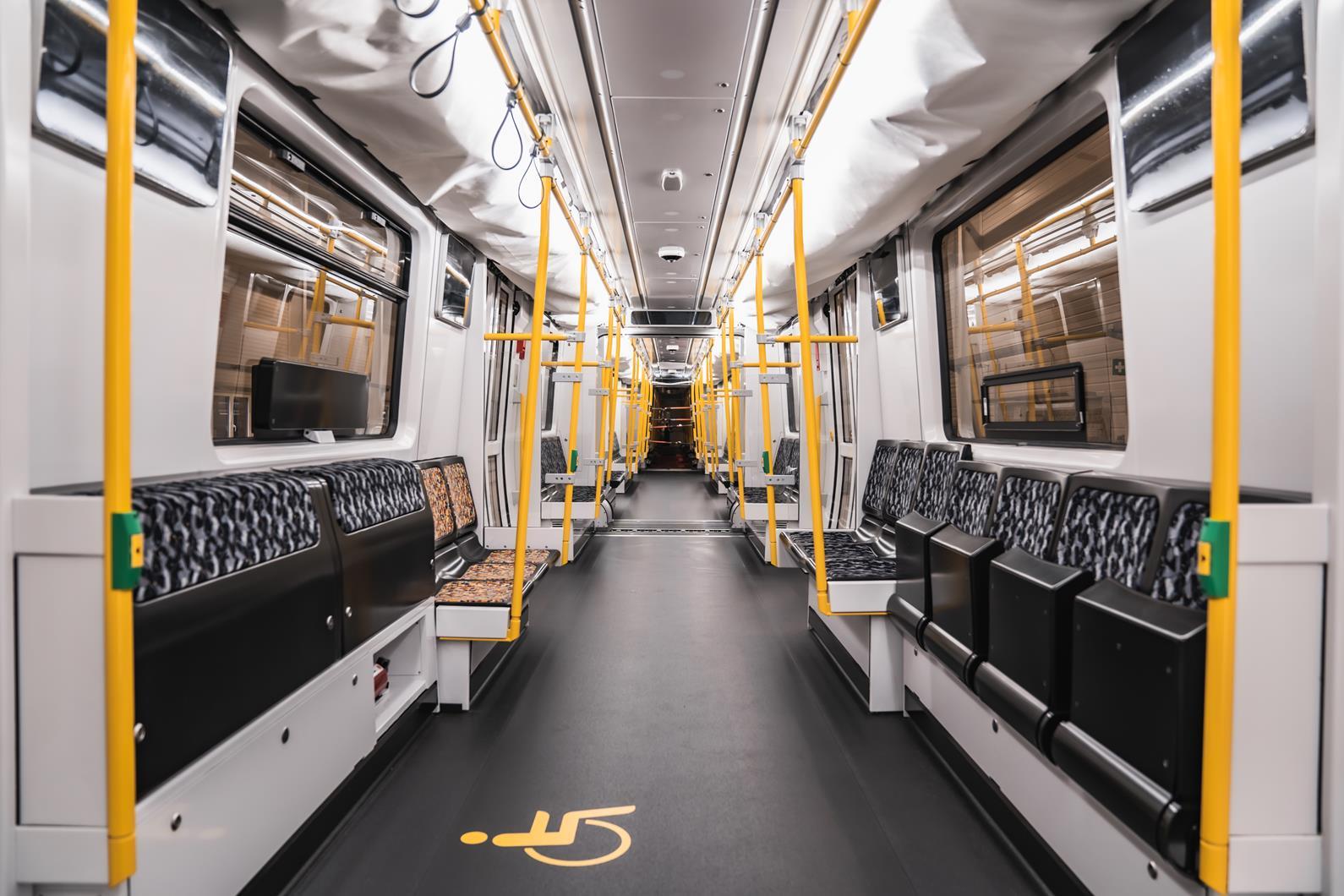 The interior of the JK-series four-car train. Source: Jonas Seidel/TeamOn
The interior of the JK-series four-car train. Source: Jonas Seidel/TeamOn
According to Stadler’s CEO in Germany Jure Mikolcic, each four-car train will consist of approximately 4,600 components and include 42 km of cables. Special attention is paid to the maximum possible use of unified components in both series in order to speed up development and production, as well as simplify maintenance and spare parts supply.
The first pre-series four-car train of the JK series has been tested in the Berlin metro since October of this year. As explained by Bjorn Braune, the head of the rolling stock renewal project at BVG, the functioning of various train systems, including the operation of automatic doors, will be checked as part of the trials. To bring the test conditions closer to the real ones, several heavy bags are loaded onto the train. Trial operation of 12 JK-series trains and 12 J-series trains with passengers should begin on the U2 and U5 lines in the autumn of 2023. It is planned that serial vehicles will enter regular operation in 2024.
As to BVG, the Berlin metro fleet currently include more than 1,200 cars. The oldest trains that are still in operation were produced in 1964.



